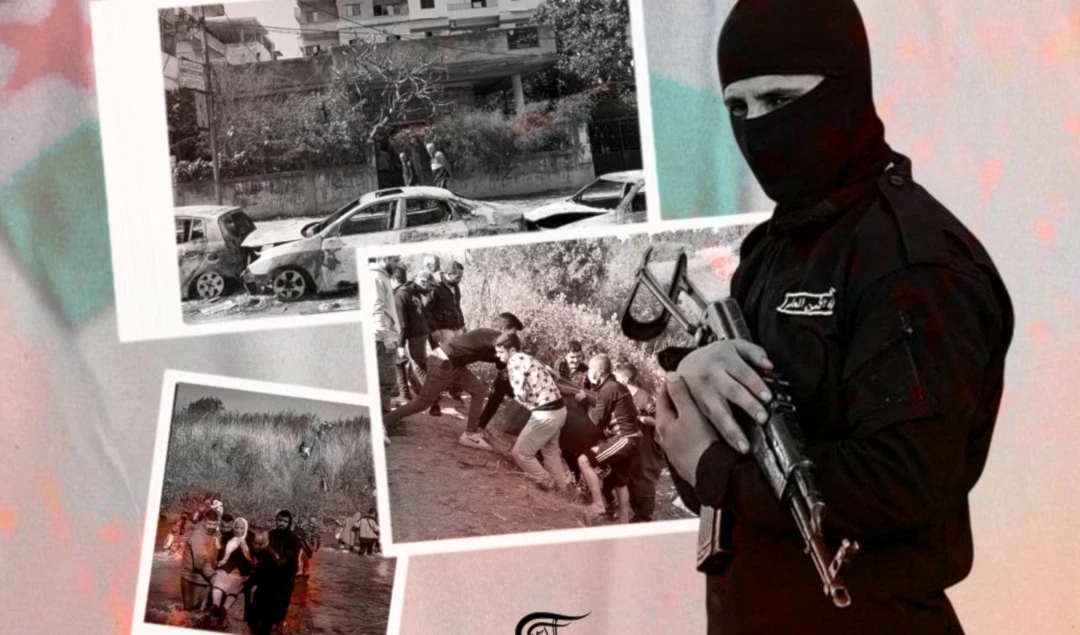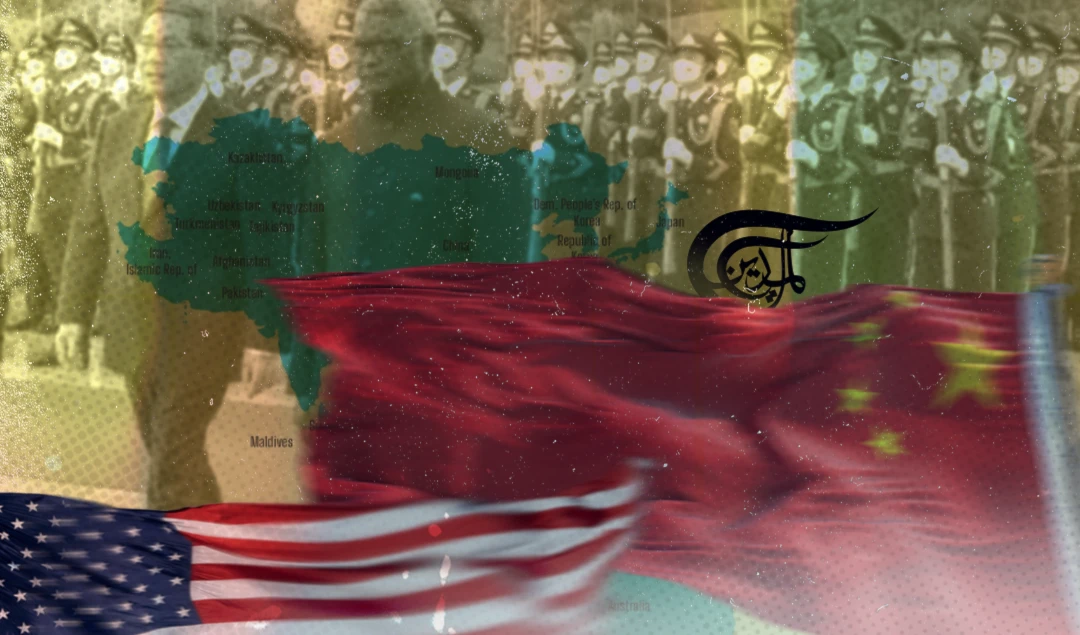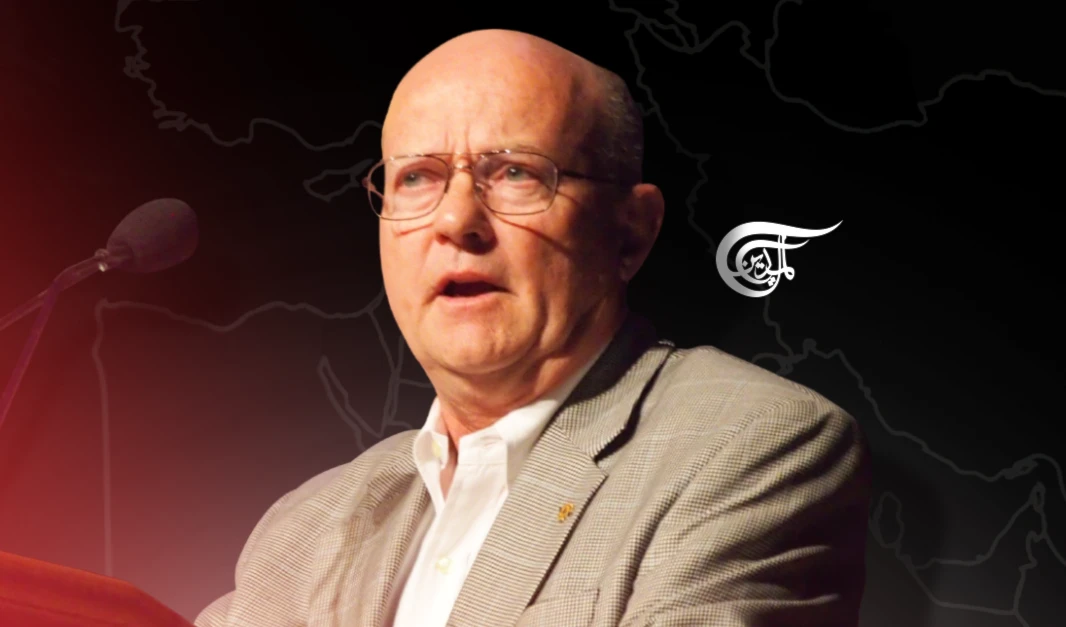The Nazi empowerment that may be unfolding in Ukraine
Recent developments in Ukraine point to a possible scenario of Nazi empowerment akin to the Salafi-Takfiri empowerment that played out in Syria shortly after the war broke out in that country.
-

The Nazi empowerment that may be unfolding in Ukraine
As the situation in Ukraine escalates, recent developments point to a possible scenario of Nazi empowerment akin to the Salafi-Takfiri empowerment that played out in Syria shortly after the war broke out in that country. Two developments, in particular, could contribute to the transformation of Ukraine into a neo-Nazi bastion even more than it already is in light of the anticipated influx of foreign fighters and the decisions taken by Western states to send lethal military aid to Ukraine. And while the West and the European countries, in particular, fell victim to the blowback and ripple effects of the Salafi-Takfiri empowerment in Syria, such repercussions are likely to pale in comparison to the repercussions of Nazi empowerment in Ukraine. Even more so, such empowerment is likely to prolong the current situation between Ukraine and Russia.
The foreign fighter element
While it was the announcement made by the Ukrainian leadership to establish a legion for foreign fighters who wished to participate in the fight against that grabbed the headlines, little has been mentioned about a similar appeal made by the neo-Nazi “Azov Battalion” group. Oleksiy Kuzmenko, who is a journalist that closely follows the far-right movement in Ukraine, noted that Azov had invited volunteers from foreign countries to come and join the fight. This invitation is apparently being taken up with vigor by like-minded groups in the Global far-right movement. According to the SITE intelligence group, far-right elements in Europe and North America are coordinating efforts to send foreign fighters to Ukraine in order to join forces with their neo-Nazi counterparts.
This galvanization however should come as no surprise given the history between Azov and other far-right groups. Following the emergence of Azov as one of the fighting forces against the ethnic Russian inhabitants of Donbass, the neo-Nazi group proceeded to cultivate ties with other players from the Global far-right. One such group goes by the name “Atomwaffen Division” – otherwise known as the “National Socialist Order." After originally emerging in the United States, Atomwaffen has been able to spread its tentacles into various parts of the world including countries like Germany, Britain, and Ukraine itself. It must be noted at the same time that foreign “fighters” from Europe and North America have traveled to Ukraine in the past to link up with far-right groups like Azov.
This history of foreign fighter activity in Ukraine points to an important and indeed dangerous difference compared to the foreign fighter phenomenon in Syria. While the foreign fighters began heading to Syria primarily after the war erupted in that country, foreign fighter involvement in Ukraine predates the current operation and actually began not long after the Donbass situation flared up in 2014. As a result, a neo-Nazi foreign fighter underground has already been established with the help of Azov and hence one can expect the flow of foreign neo-Nazis to Ukraine to take place at an even greater pace compared to the foreign fighter flow to Syria.
The danger of Ukrainian President Volodymyr Zelinsky’s call for foreigners to join the battle against Russia meanwhile lies in the fact that it runs the risk of radicalizing these foreigners even if they are not currently affiliated with the global far-right movement. According to a report that was published by the Soufan Group in 2019, individuals who travel to Ukraine for purposes not related to extremist right-wing ideology are nonetheless vulnerable to right-wing radicalization during their stay in the country. A case in point here is the perpetrator of the Christchurch terrorist attacks Brenton Tarrant who is believed to have traveled to Ukraine prior to committing his massacre.
The agendas of groups like Azov perhaps offer an explanation as to why leaders of such groups have gone to great lengths to cultivate close ties with like-minded Global groups like Atomwaffen. Put simply just as groups like ISIS had broader transnational agenda; the same applies to the above-mentioned neo-Nazi groups. In fact, if we dig deeper the similarities between neo-Nazis and ISIS are striking. For while the ISIS project was the establishment of a so-called “Islamic Caliphate”, the neo-Nazi project of groups like Azov is based on a similar medieval worldview. This worldview was outlined by the founder of Azov Andriy Biletsky who stated in 2010 that Ukraine’s mission was to “lead the white races of the world in a final crusade… against Semite-led Untermenschen [subhumans]”.
And just as the ISIS project required immense manpower – which it was able to gain ironically partly due to Western countries opening their doors for foreigners to head to the conflict zone – the same equation applies to the neo-Nazi project. It could be concluded that Azov seeks the manpower it needs in the form of fellow right-wing ideologues from across the globe.
At the same time, the open-door policy that was adopted by Western countries in Syria seems to be on its way to being repeated in Ukraine. Countries like Denmark and Latvia have given the go-ahead for their citizens to travel to the conflict zone, while British foreign minister Liz Truss declared her support for the idea of British citizens taking part in the fight against Russia. By pursuing such a policy, such countries are thereby contributing whether deliberately or not to the manpower sought by Azov.
And while such similarities with Syria exist, there are also important differences that make the case of Ukraine that much more dangerous. In addition to the risk of “on the ground radicalization” in Ukraine, foreigners may also feel free to join groups like Azov given that the latter — contrary to groups like ISIS and Al-Nusra — has not been designated as a terrorist organization in Western countries despite the calls for such labeling. As a result, Western citizens can become active members of Azov without fear of prosecution when they return to their home countries.
Another difference, which is perhaps the most dangerous, is that right-wing sympathizers exist in the West in far greater numbers compared to the average profile of Western citizens of Muslim origin who may have been inclined to join the ranks of ISIS and Al-Nusra in places like Syria and Iraq. Given this disparity, one can expect a blowback much more severe than that which was inflicted on Western countries as a result of their open-door policy toward Syria.
The weapon shipments to Ukraine
Another common feature between Syria and Ukraine is that which relates to the export of weapons, however here again the case of Syria appears to pale in contrast to Ukraine. While the CIA provided weapons to Syrian “rebels” and weapons shipments bound for Syria also came from Balkan countries, the lethal aid being funneled from Western countries to Ukraine appears to be of much larger magnitude. Furthermore, countries like Germany that had previously abstained from sending weapons into conflict zones have changed course and announced that they will be sending arms to Ukraine.
While the western weapons reached the hands of extremist groups like ISIS, the weapons exported to Ukraine are all but guaranteed to fall into the hands of neo-Nazis. This stems from the fact that neo-Nazi groups are actually part of the security apparatus in Ukraine, with Azov being part of the Ukrainian national guard.
How these factors serve to contribute to a neo-Nazi takeover of Ukraine
If recent history has proven anything, it is that groups with more ideological zeal are bound to overpower those for whom ideology may be a secondary factor. Such a scenario played out in places like Syria where the more ideological extremist groups like ISIS and Al-Nusra overpowered the more “moderate” groups like the Free Syrian Army. If we are to apply the same equation in Ukraine, we must assume a similar scenario where neo-Nazis overpower the more “moderate” elements as a result of accessing more manpower and advanced weaponry. If we are to further apply the Syrian equation in Ukraine we can expect to see supposed “moderates” defecting to the neo-Nazi camp just as members of the “moderate” Free Syria Army defected to extremist groups like Al-Nusra.
This scenario of Nazi empowerment in Ukraine is also bound to prolong the current conflict. For starters, the Russian leadership will not tolerate such a scenario as it would mean further the “Nazification” of the country. Indeed, as prominent experts have pointed out, many of the foreigners who intend to travel to Ukraine hold the belief that the fight against Russia is a sacred historical duty and would therefore constitute a dangerous threat to Russian national security that Moscow could not afford to disregard. Another factor is that the empowering of the neo-Nazis will increase their sway in the current conflict and render it nearly impossible for president Zelinsky to enter into any kind of peace talks or make even the slightest of concessions required to end the conflict.

 Ali Rizk
Ali Rizk
 9 Min Read
9 Min Read










